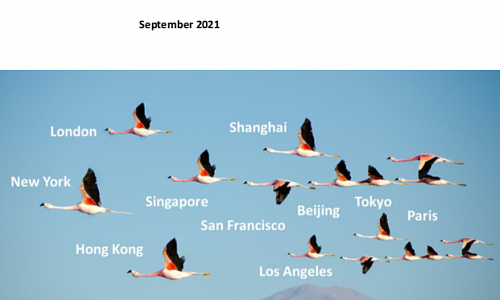 Author:Zheng Yujie, Director, Information and Communications Department
Author:Zheng Yujie, Director, Information and Communications Department
Editor's Note:The signing of the Framework Agreement for Deepening Guangdong-Hong Kong-Macao Cooperation and Promoting the Development of the Bay Area on July 1, 2017 clarified the direction for Guangdong, Hong Kong and Macao to forge an internationally top-notch Bay Area and world-class city cluster. The challenges and positioning changes facing the Guangdong-Hong Kong-Macao Bay Area will greatly influence the region’s next step.
The Guangdong-Hong Kong-Macao Bay Area was initially established to optimize a combination of markets factors across the globe and provide China with a new open platform to integrate resources. In addition, as profits for copycatting technology shrink and bonuses in economic reform dwindle, the Chinese economy desperately needs an innovation-driven growth model. Furthermore, the Bay Area has become the major growth pole in the global economy and primary engine for technological revolution because of the cluster effect. Finally, the Bay Area’s economy helps Hong Kong translate its free economy and lawful society advantages into competitive strengths which will further stimulate the city's economic expansion.
The Guangdong-Hong Kong-Macao Bay Area holds advantages such as high economic capacity, favorable geographic location, outstanding innovation capability, internationalization and a solid foundation in cooperation. However, in the context of the global economy, the biggest challenges to the Guangdong-Hong Kong-Macao Bay Area are fully integrating the cities in the Bay Area, overcoming administrative and systematic barriers, realizing the optimized allocation of resources and improving the operating efficiency of the whole region.
The positioning of the Guangdong-Hong Kong-Macao Bay Area should be considered from the perspectives of the national economic development strategy and its historically significant mission. First, the Area should explore the trade and investment rules and regulations of high standards, develop an open economic system that match the international community, and function as a hub for the “Belt and Road” strategy. Second, the Area should strengthen its global resources allocation capacity and cultivate a competitive innovation center. Third, the Area should fully harness the unique strengths of Hong Kong and Macao and advocate in-depth collaboration between the Special Administrative Regions and the Chinese mainland. Fourth, the Area should forge a world-class city cluster and a powerhouse of economic growth to become a cornerstone in global and regional competition.
The development the Guangdong-Hong Kong-Macao Bay Area should focus on the following four areas. First, as the transportation network improves, a “commute circle” within the city cluster will be established. Second, innovation will be prioritized over the commercialization of scientific technology and the application of research results, and an innovation ecology network should be established that links the Chinese mainland with Hong Kong and Macao. Third, industrial infrastructure will be upgraded and the proportion of high-end services will continue to rise. Finally, a transition from an export-oriented production center to a production and consumption center focusing on trade in both goods and service will occur.








